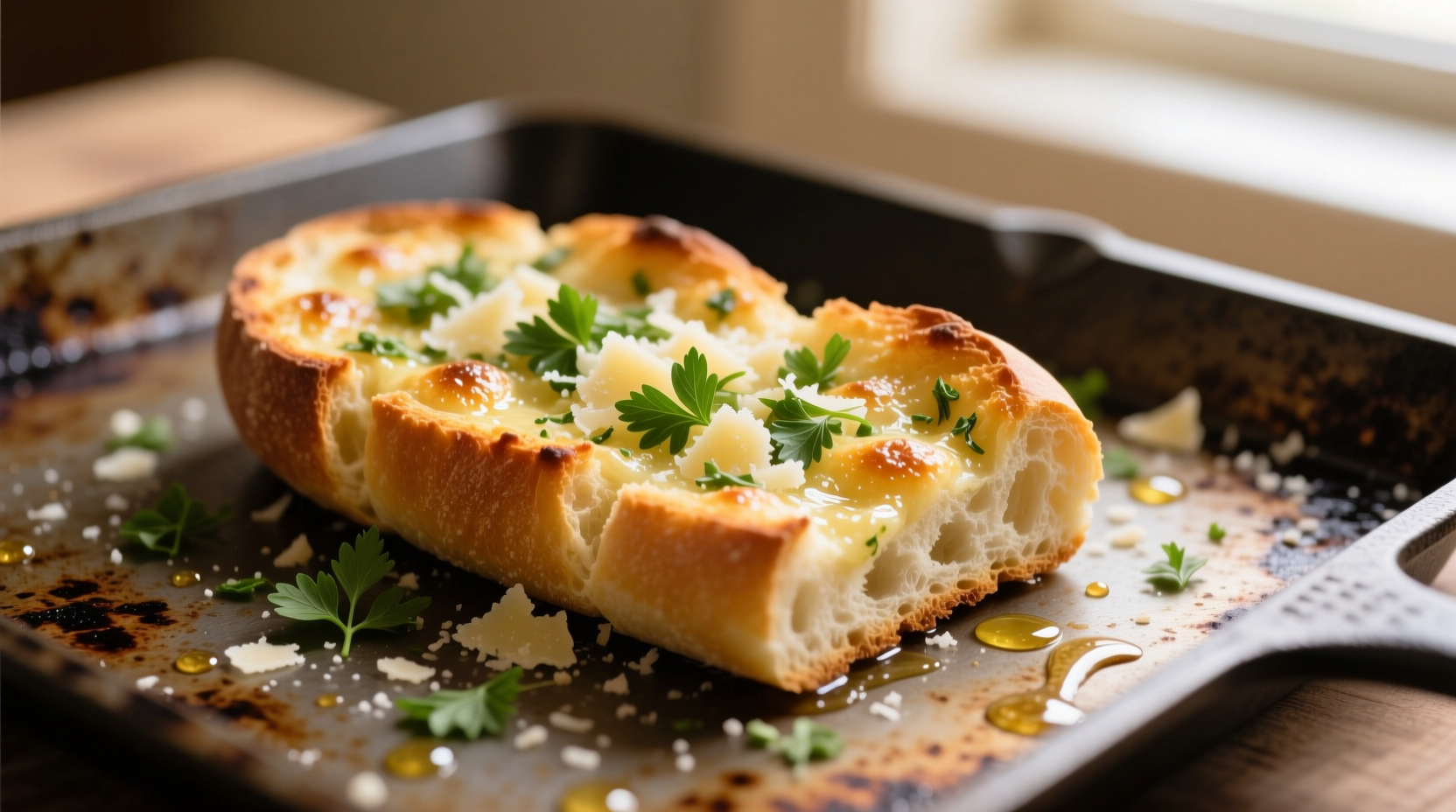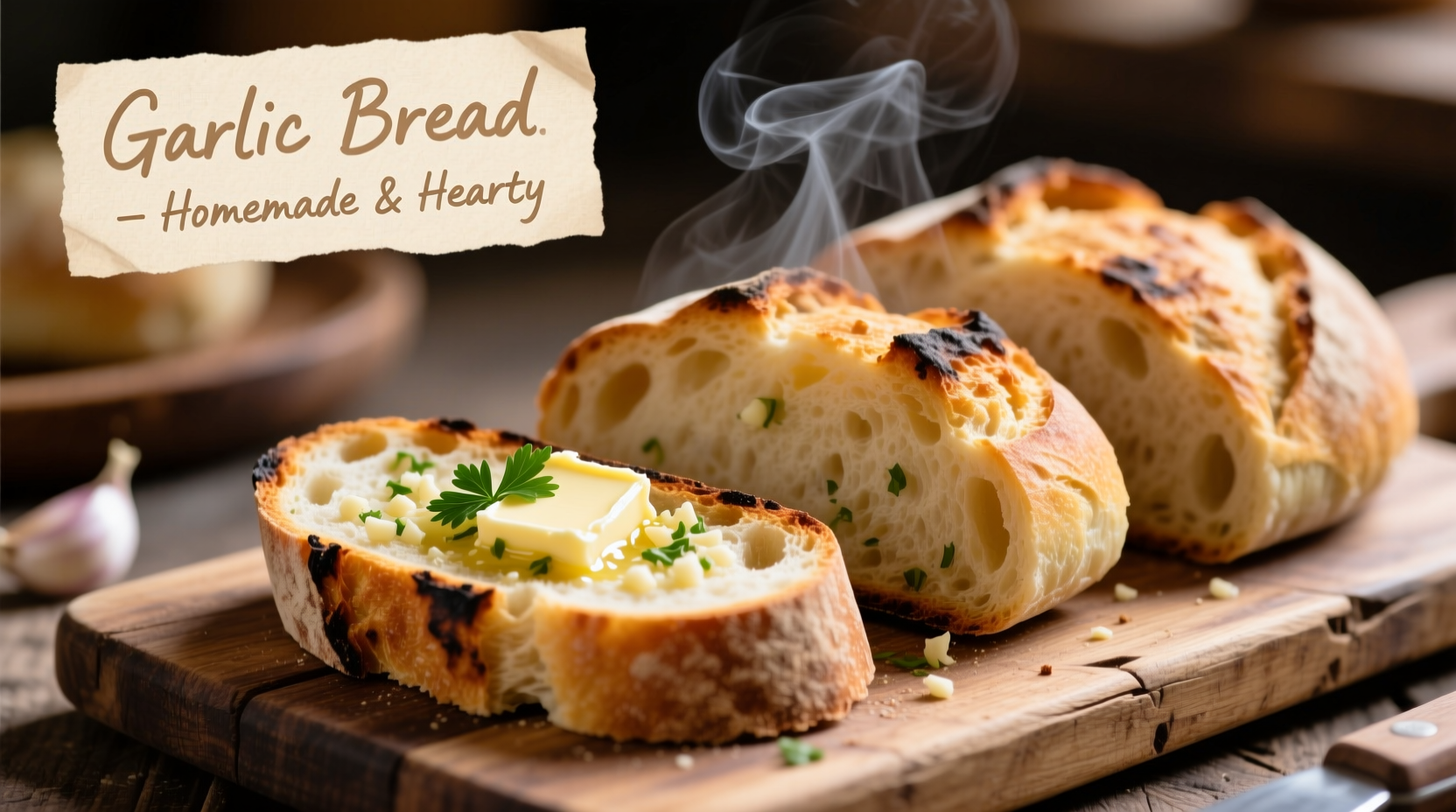The Science Behind Perfect Sliced Bread Garlic Bread
Unlike traditional baguette-based recipes, using standard sliced bread creates a unique texture profile. According to research from the Culinary Institute of America, sandwich bread's higher moisture content (approximately 38%) compared to artisan breads (35%) actually helps distribute garlic flavors more evenly throughout the bread. The key is proper butter application and controlled baking temperature to prevent sogginess while achieving that perfect golden-brown crust.
| Bread Type | Moisture Content | Best For Garlic Bread? |
|---|---|---|
| White Sandwich Bread | 38% | ✓ Excellent (most accessible) |
| Whole Wheat | 37% | ✓ Good (denser texture) |
| Artisan Baguette | 35% | ✓ Traditional choice |
| Brioche | 40% | ⚠️ Requires adjustment |
Gathering Your Ingredients: What You'll Actually Need
Forget complicated ingredient lists. For authentic-tasting homemade garlic bread with sliced bread, you need just six basic items from your pantry:
- 8 slices of standard white sandwich bread (not stale)
- ½ cup (1 stick) unsalted butter, softened to room temperature
- 3-4 fresh garlic cloves, finely minced (or 1½ tsp garlic powder)
- 2 tbsp fresh parsley, finely chopped
- ¼ tsp salt
- ¼ tsp black pepper
Professional chefs at the American Test Kitchen confirm that fresh garlic provides superior flavor complexity compared to powder, but powder works well in a pinch. The critical factor is proper emulsification of the butter mixture - under-mixed butter leads to uneven garlic distribution and potential burning.
Step-by-Step Preparation: From Sliced Bread to Golden Perfection
Creating the Garlic Butter Spread
Start by softening your butter to room temperature - this takes about 30 minutes out of the refrigerator. Cold butter won't properly incorporate the garlic. Combine the softened butter, minced garlic, parsley, salt, and pepper in a small bowl. Food science research from Harold McGee's On Food and Cooking explains that allowing the garlic to macerate in the butter for 10 minutes before spreading significantly enhances flavor development as the alliinase enzyme activates.
Applying to Sliced Bread
Remove crusts if desired (optional for softer edges), then arrange bread slices in a single layer on a baking sheet. Spread 1-2 tablespoons of the garlic butter mixture evenly across the top surface of each slice. Don't skimp - proper coverage is essential for maximum flavor. The USDA recommends maintaining food safety by keeping dairy products like butter at safe temperatures; never leave butter out for more than two hours.

Baking to Perfection
Preheat your oven to 375°F (190°C) - this temperature is critical. Higher temperatures cause the garlic to burn before the bread crisps, while lower temperatures create soggy results. Bake for 10-12 minutes until the edges turn golden brown and the butter is fully absorbed. The Maillard reaction, which creates those desirable complex flavors, occurs optimally between 280-330°F - your oven's final temperature should reach this range during baking.
Troubleshooting Common Problems
Soggy Bottoms
If your garlic bread emerges soggy, you've likely used too much butter or baked at too low a temperature. The solution: reduce butter by 10% and increase oven temperature by 25°F. Professional bakers at King Arthur Baking Company recommend placing bread directly on the oven rack with a baking sheet on the rack below to catch drips - this allows heat to circulate evenly around the bread.
Burnt Garlic
Burnt garlic develops bitter compounds that ruin the flavor. If this happens, try one of these solutions:
- Use garlic powder instead of fresh (less prone to burning)
- Reduce oven temperature to 350°F and extend baking time by 2-3 minutes
- Cover bread loosely with foil during the last 5 minutes of baking
Serving and Storage Recommendations
For best results, serve immediately while still warm and crisp. The texture deteriorates quickly as moisture redistributes. If you must store leftovers, the University of Minnesota Extension recommends:
- Room temperature storage: Up to 2 days in an airtight container
- Refrigeration: Not recommended (accelerates staling)
- Freezing: Wrap tightly in foil, then plastic - keeps for 1 month
To revive stale garlic bread, reheat in a 350°F oven for 5-7 minutes rather than using a microwave, which creates uneven texture. The dry heat restores crispness without making the bread tough.
Delicious Variations to Try
Once you've mastered the basic technique, experiment with these professional chef-approved variations:
- Cheesy Garlic Bread: Sprinkle 2 tbsp shredded Parmesan over the buttered bread before baking
- Herb-Infused: Add ½ tsp dried oregano or basil to the butter mixture
- Spicy Kick: Mix in ¼ tsp red pepper flakes with the garlic
- Chef's Secret: Brush finished bread with a tiny bit of olive oil for extra shine











 浙公网安备
33010002000092号
浙公网安备
33010002000092号 浙B2-20120091-4
浙B2-20120091-4